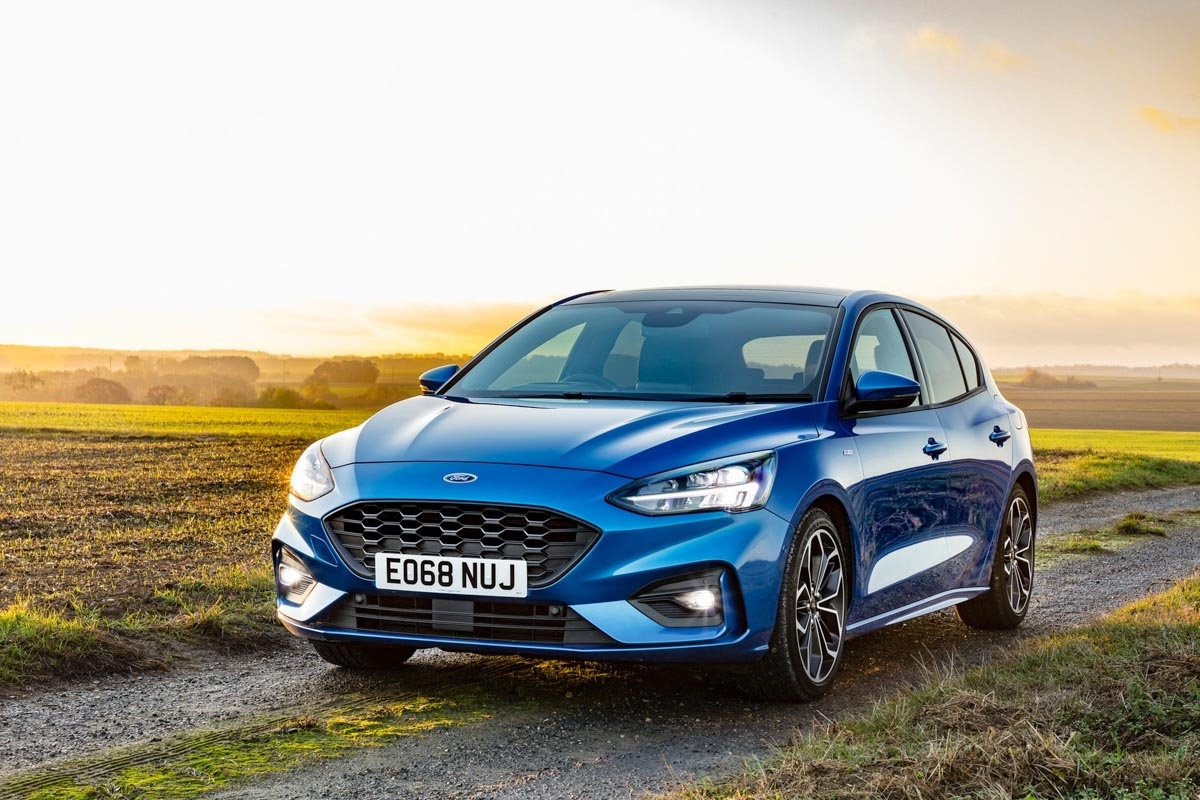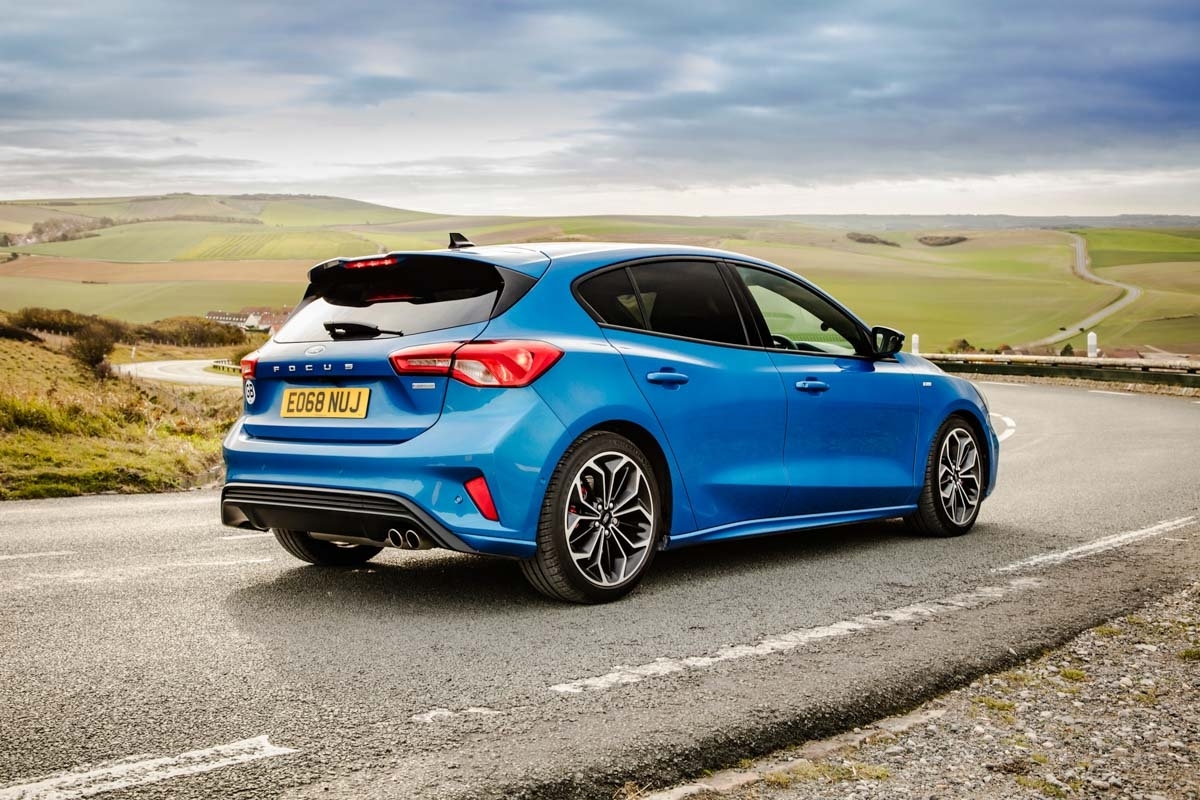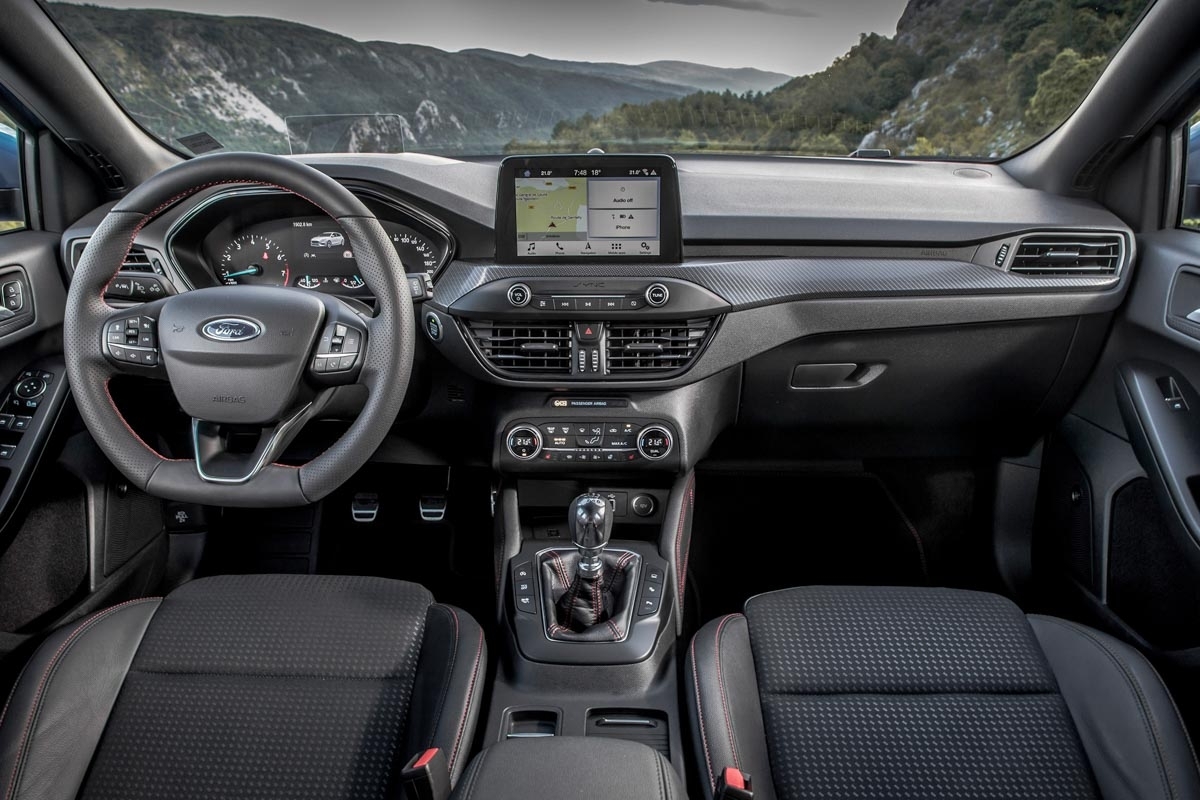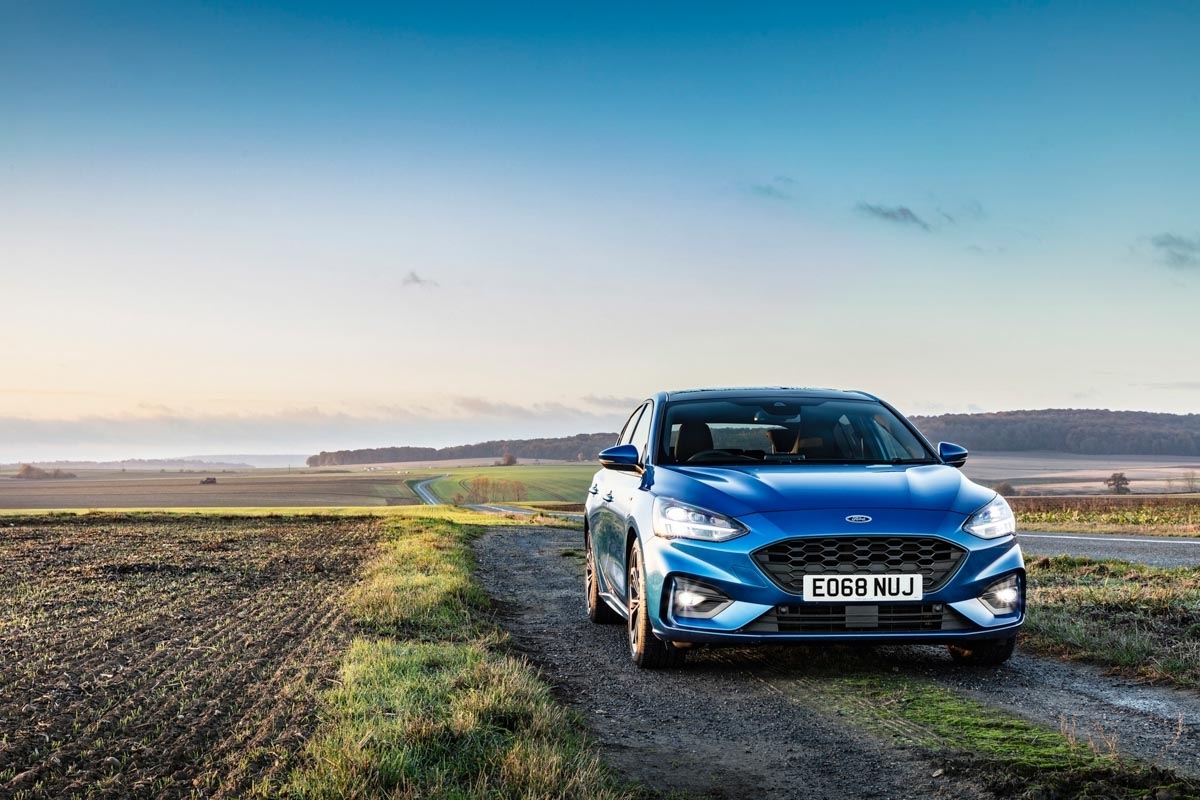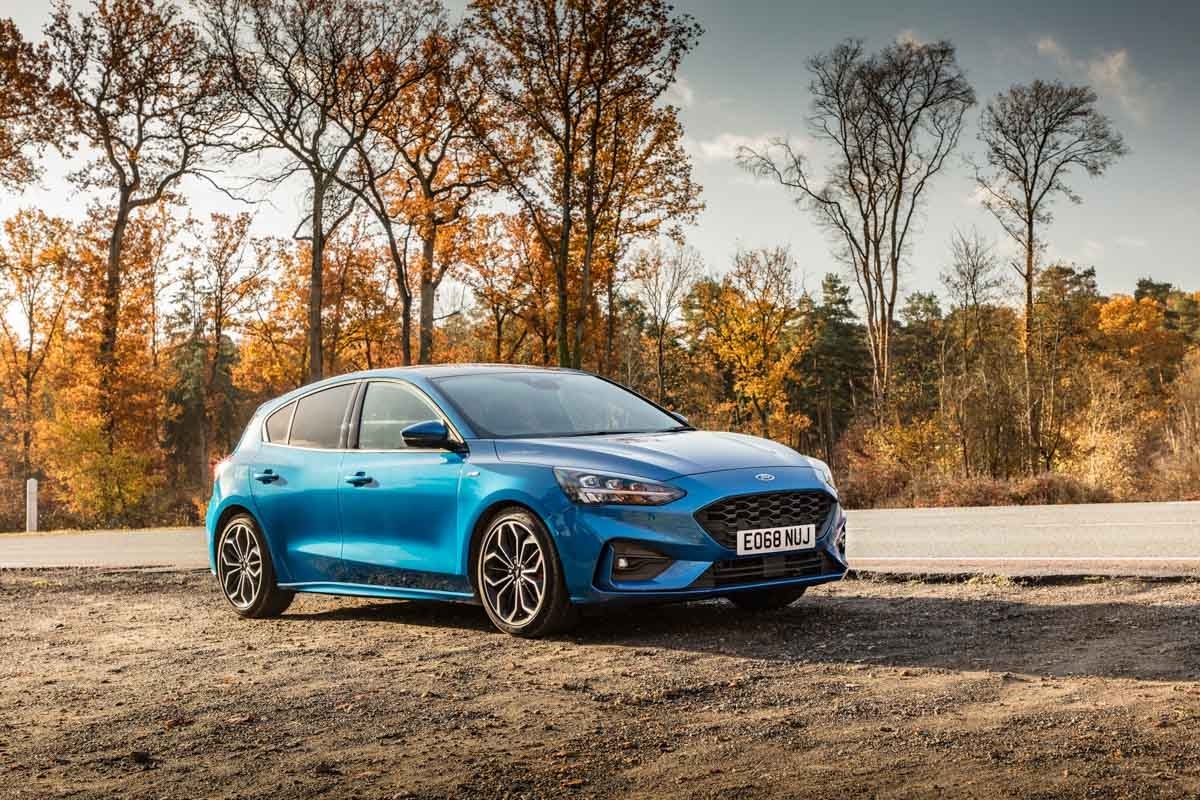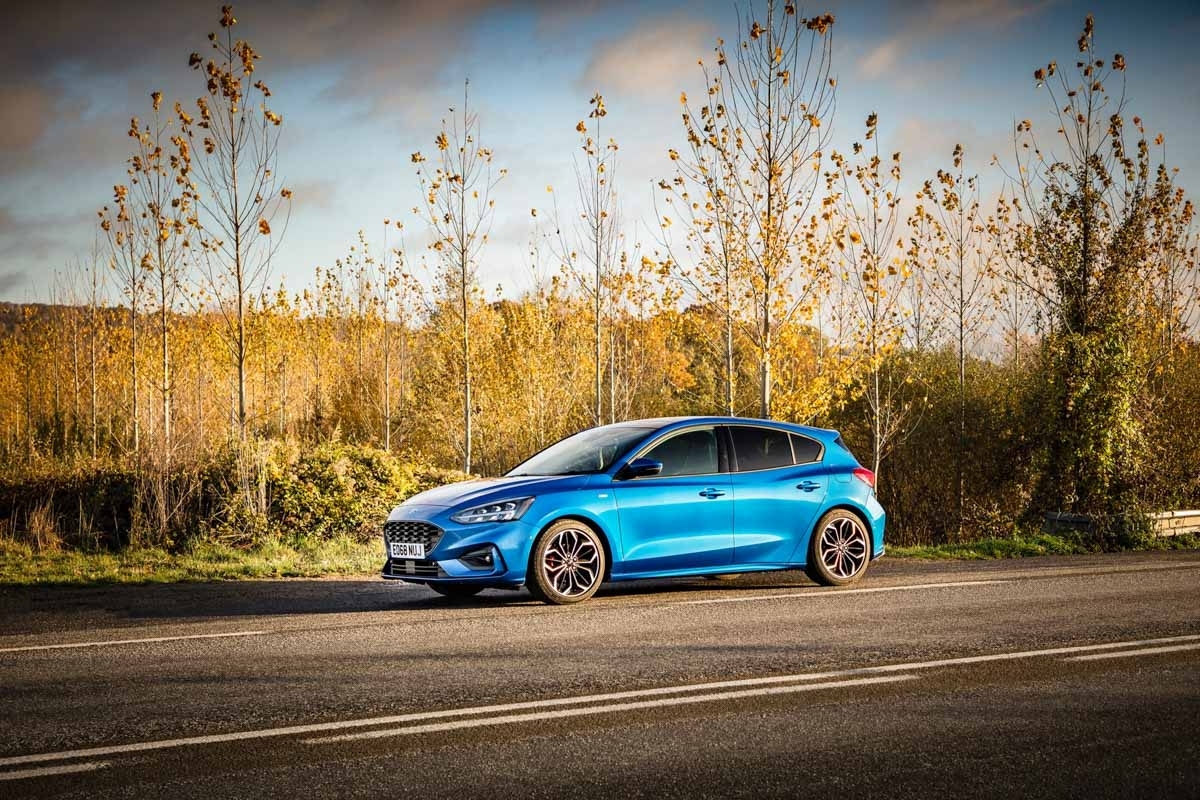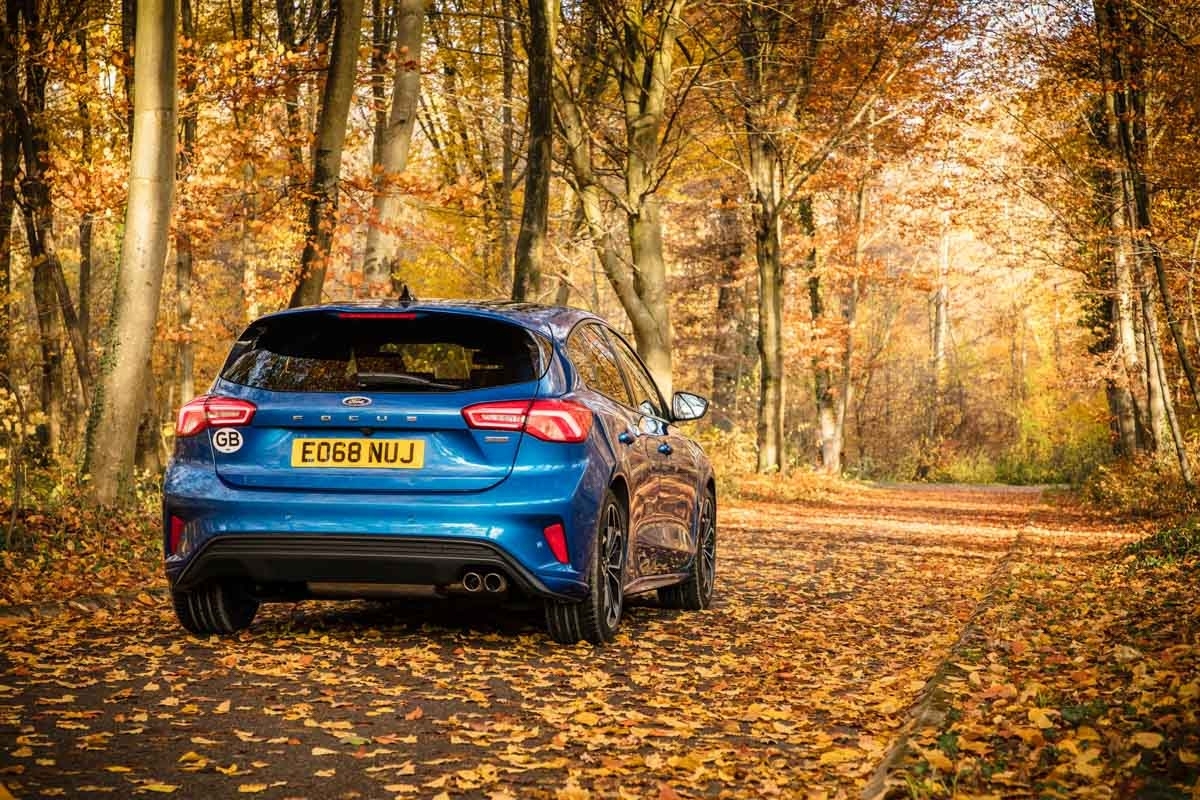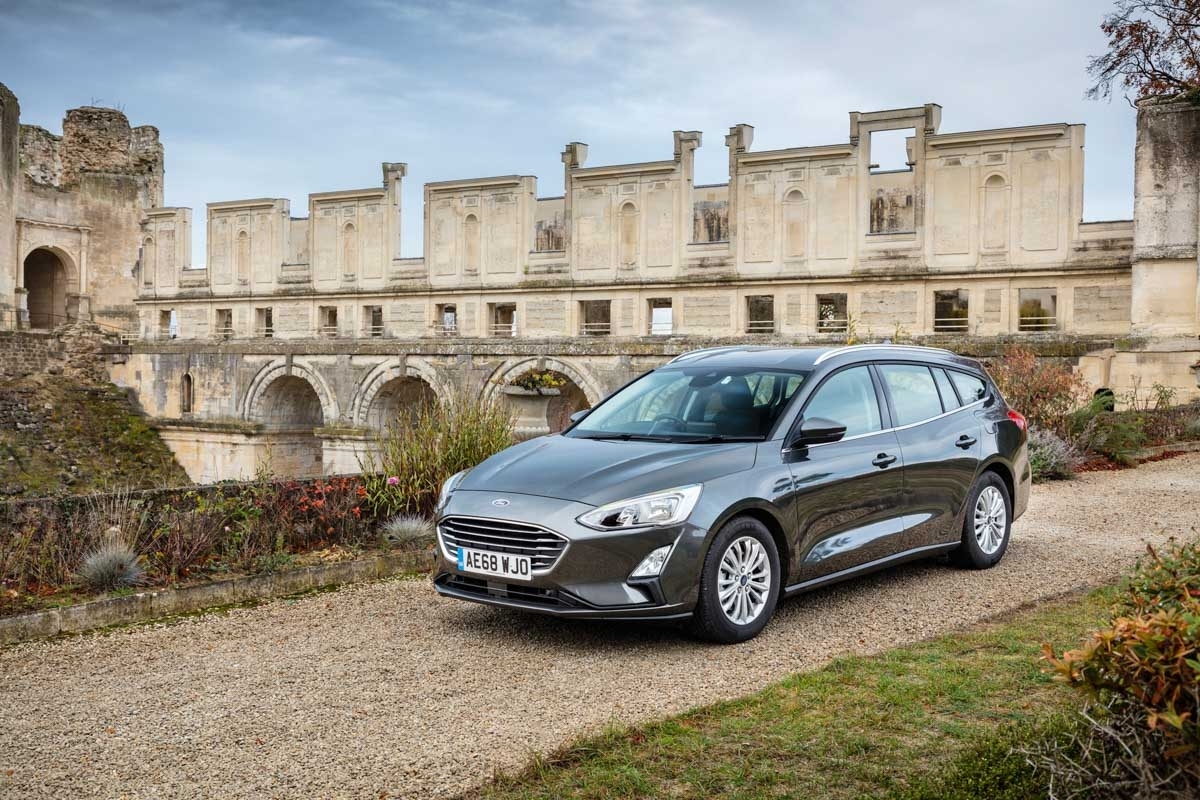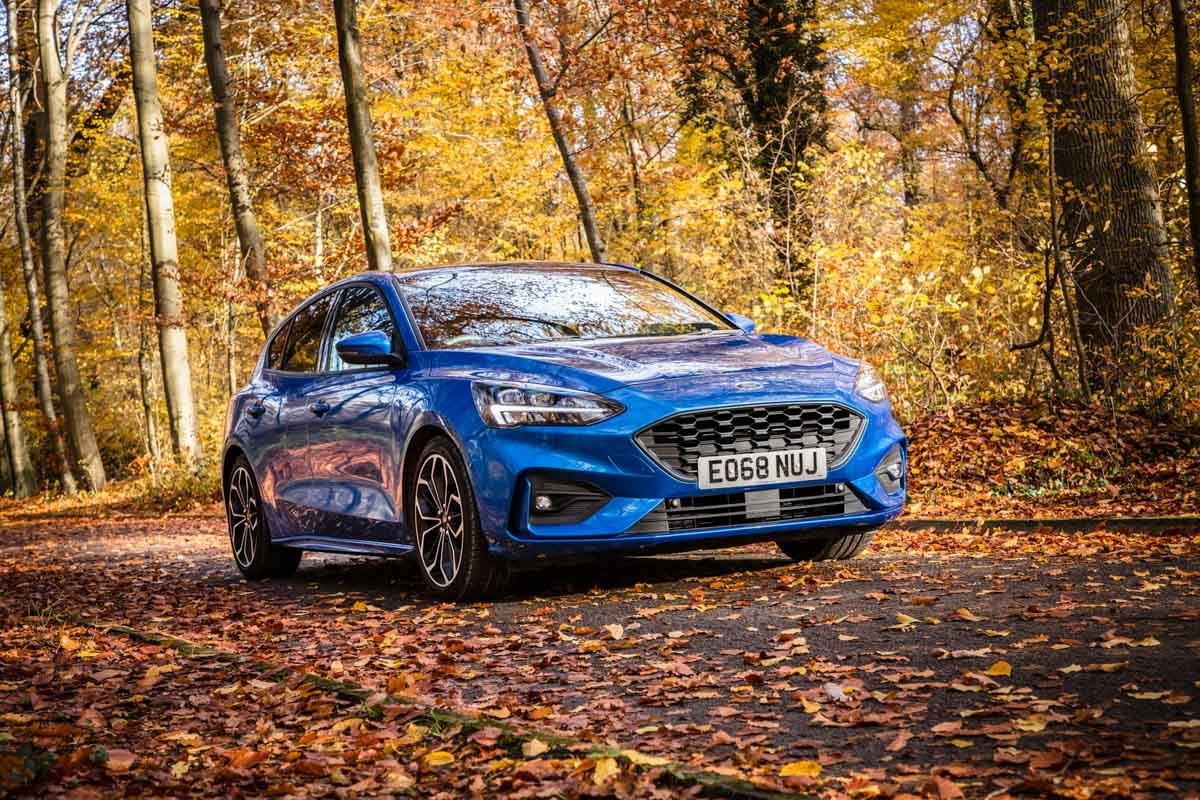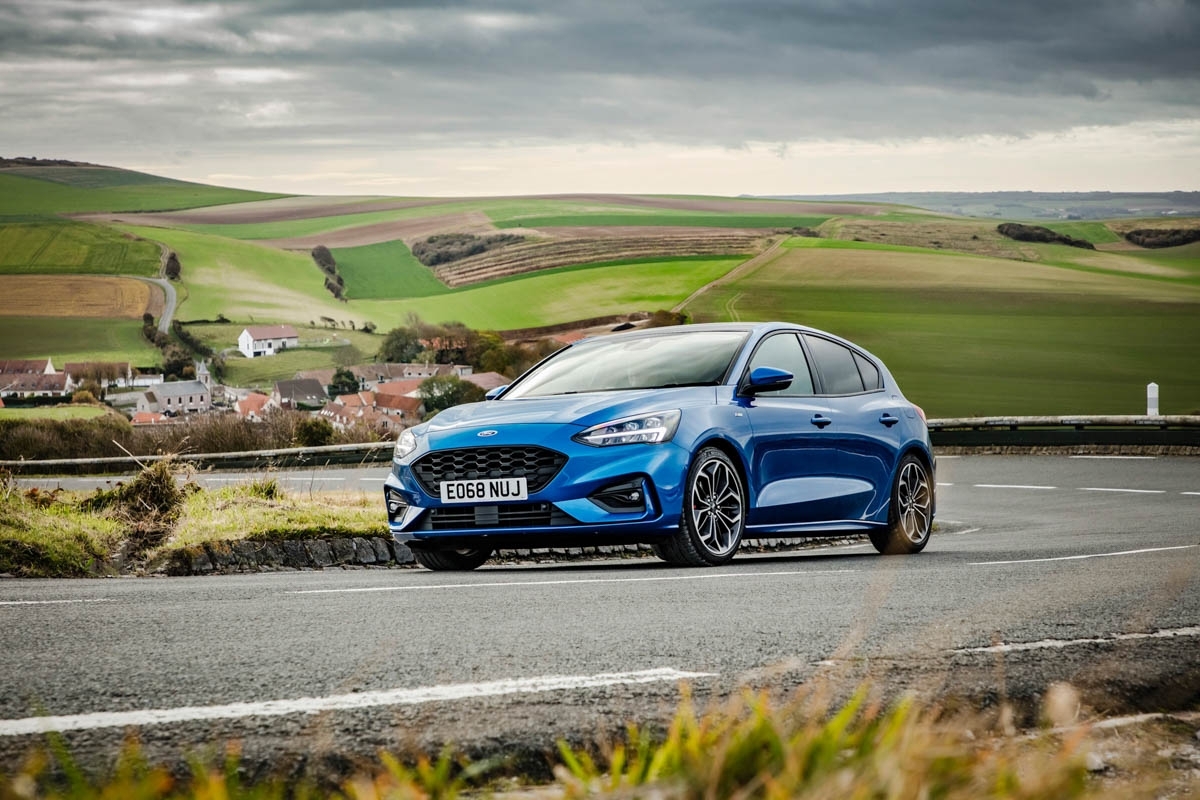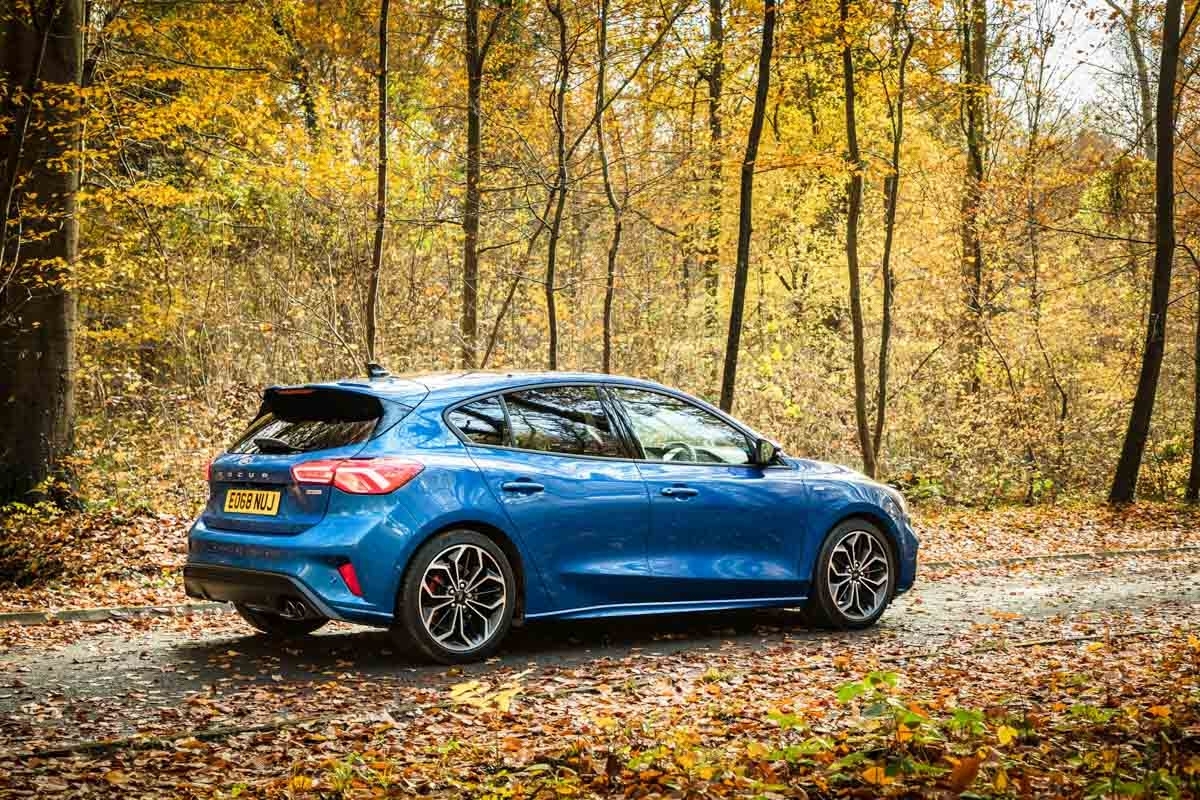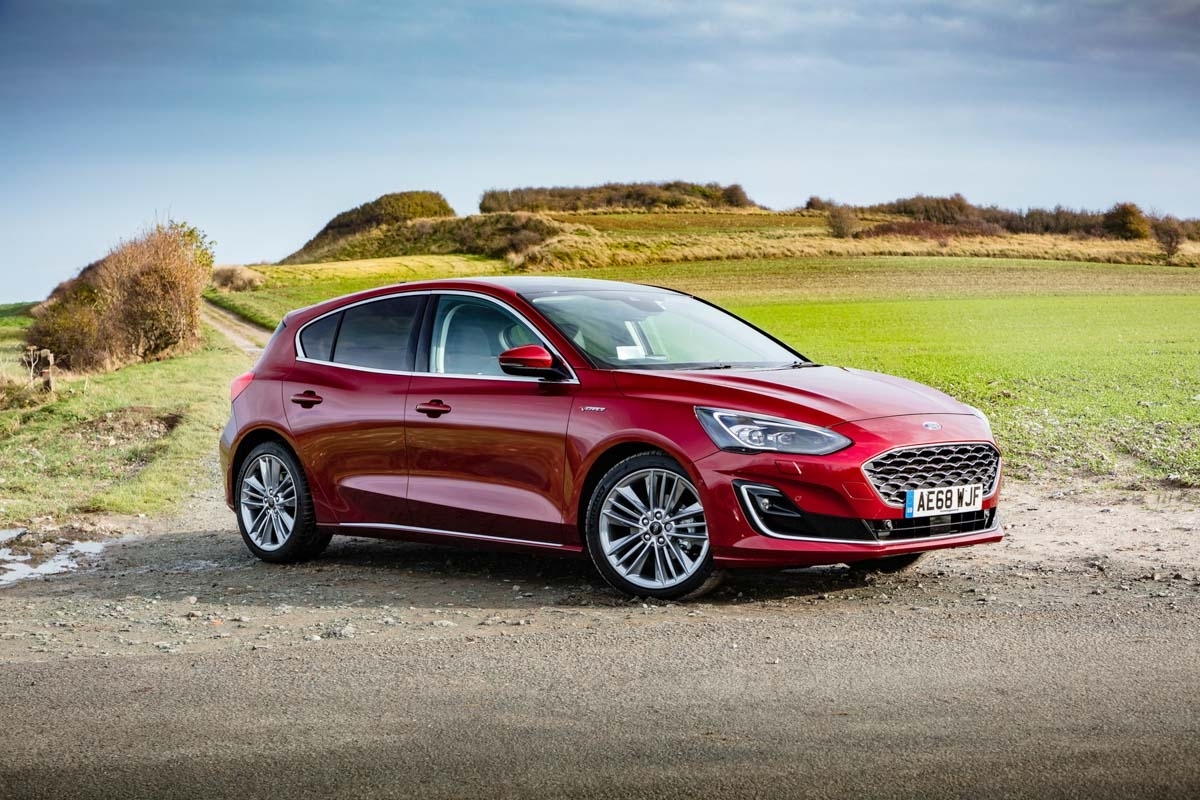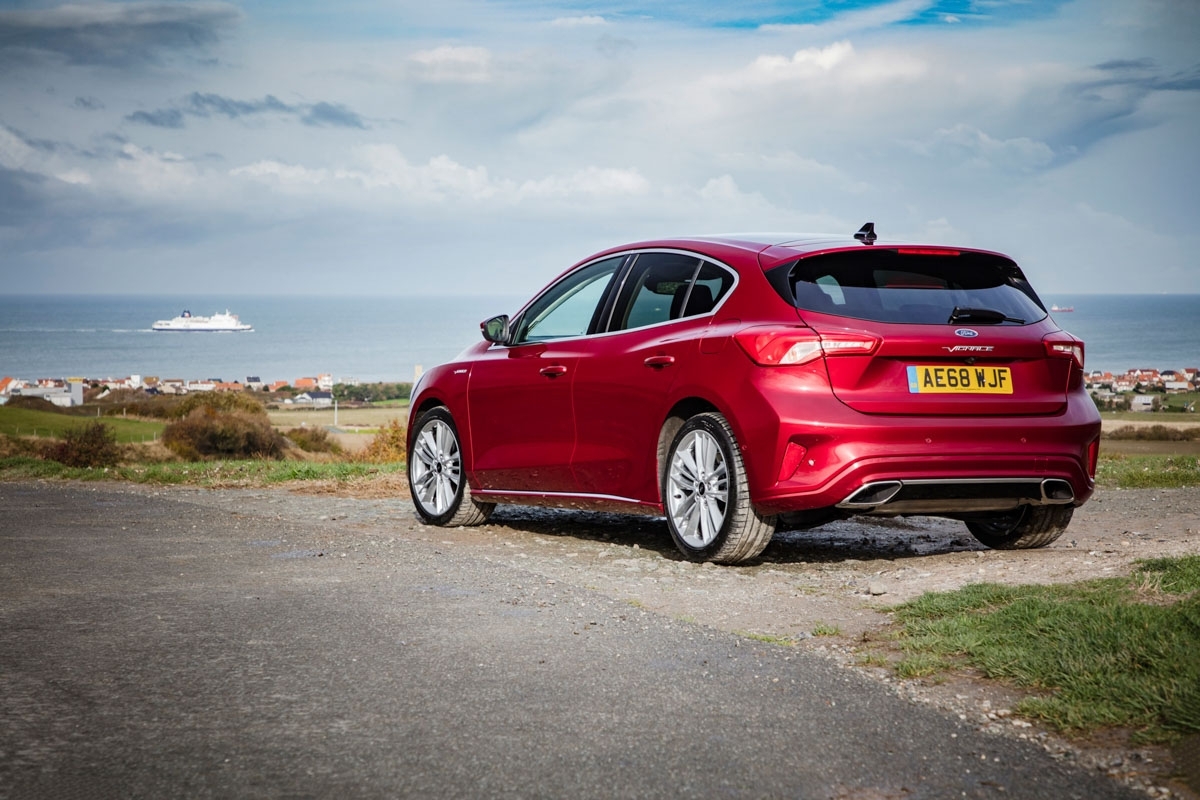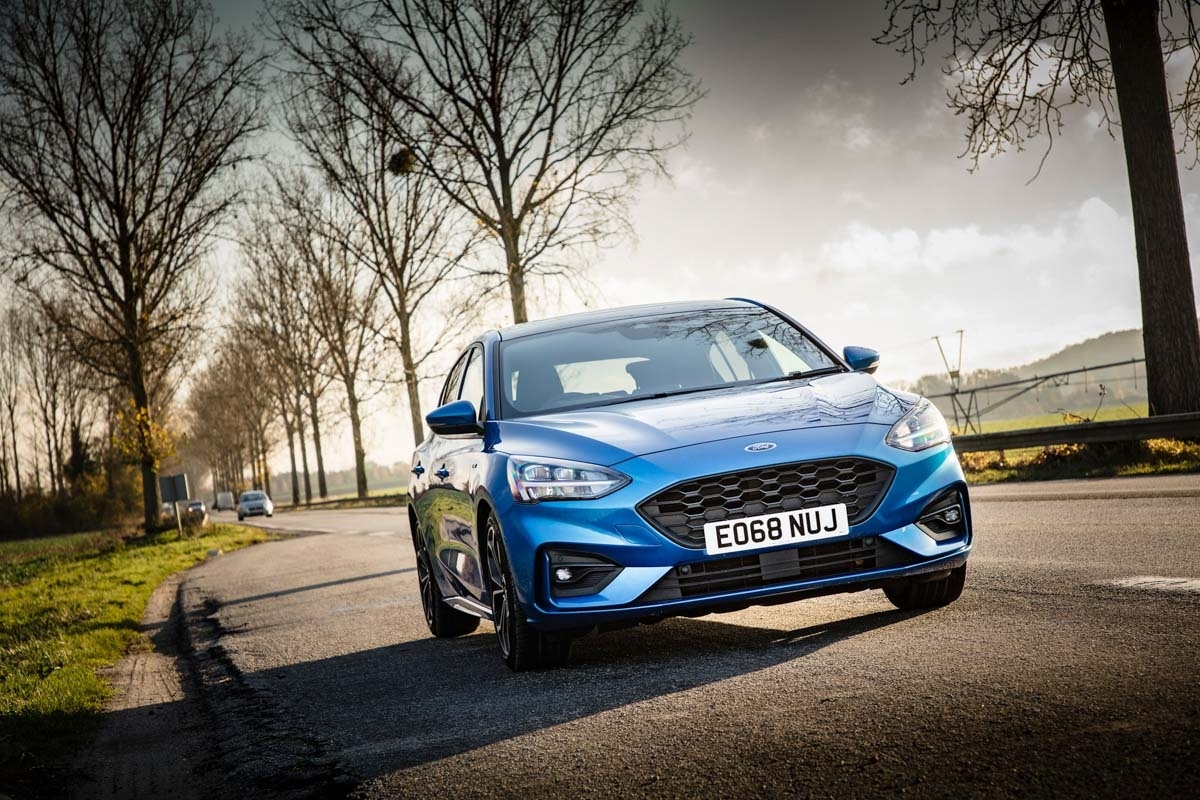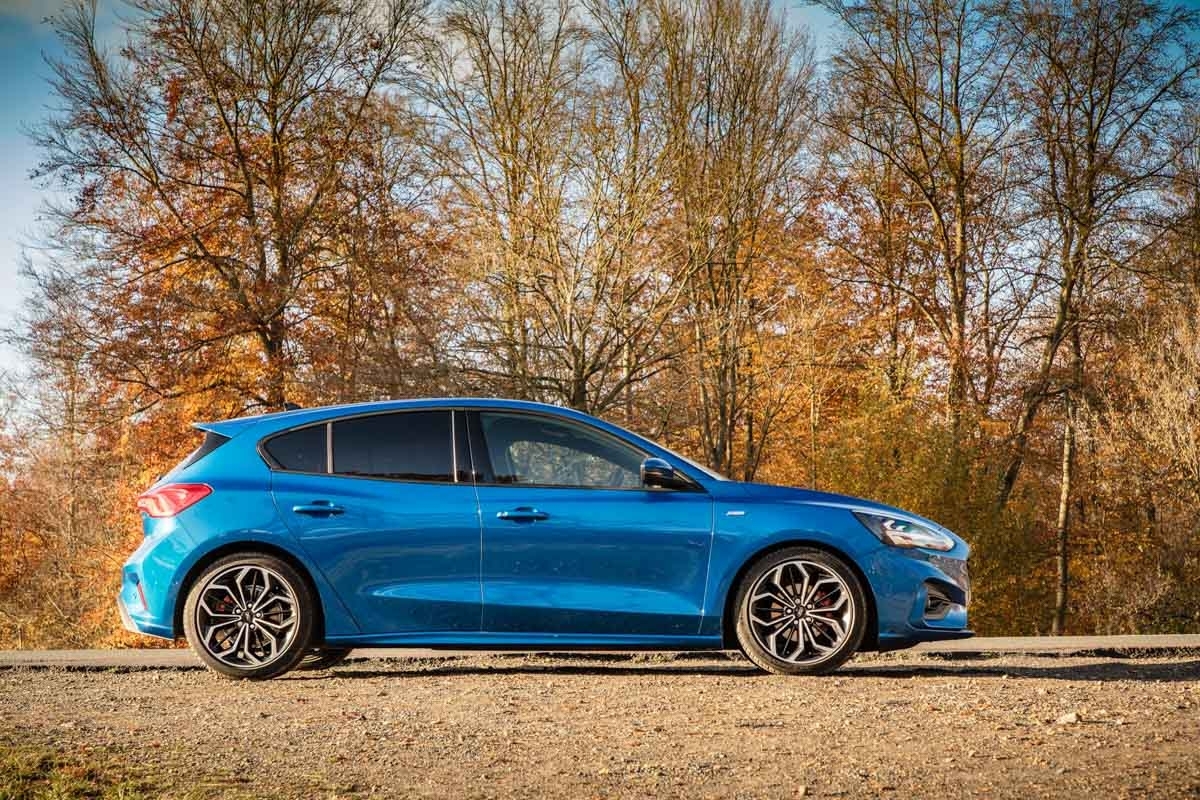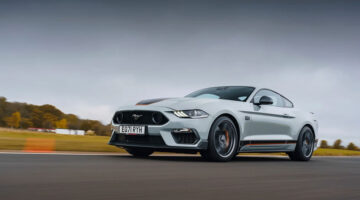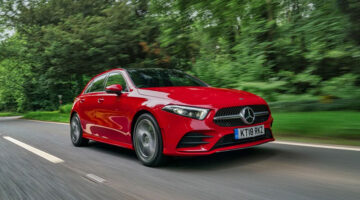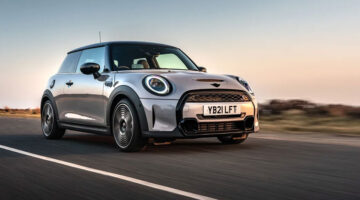| Classic Focus ‘togetherness’ in the ride and handling, much better interior and ergonomics too | |
| Less clarity to the steering than the old model, odd styling |
The Ford Focus has been a family hatch stalwart for over 20 years now, replacing the iconic Escort with the sharp-looking and sharp-to-drive hatch that took the class by storm. Four generations later, the all-new Focus may have the same mantra, but the market space it finds itself in has never been tougher.
To approach this, the Focus has been stretched in every direction of the hatchback genre, with entry cars joined by sporty ST-Line, luxury Vignale and even pseudo SUV Active models. A hot ST model will follow next summer, and eventually an RS too, but for now let’s focus on the standard car, no pun intended (got it out of the way there).
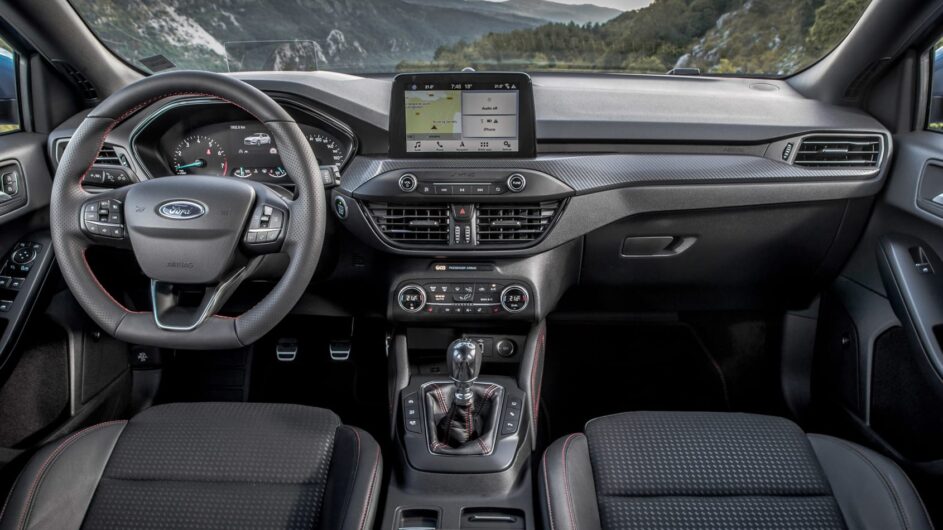
Prices, specs and rivals:
Prices start at $23,400 for the entry-level 1-litre petrol five-door hatch model with 84bhp, but it’s sparsely specced, not to mention a lot of car to move around with not a lot of power. An extra $450 will get you the friskier 99bhp model, and a further $640 will add another 25bhp to the total, taking it to 124bhp. The larger 1.5-litre, 150bhp and 184bhp options are also available further up the range, but aren’t available in entry Style or Zetec grades.
Upgrading from Style to Zetec will cost $1720 or so depending on the engine, adding alloy wheels, front fog lights, a heated windscreen, leather steering wheel, cruise control and that all-important dash top-mounted 8-inch touchscreen that keeps the interior from looking like a TV cabinet without a TV in it.
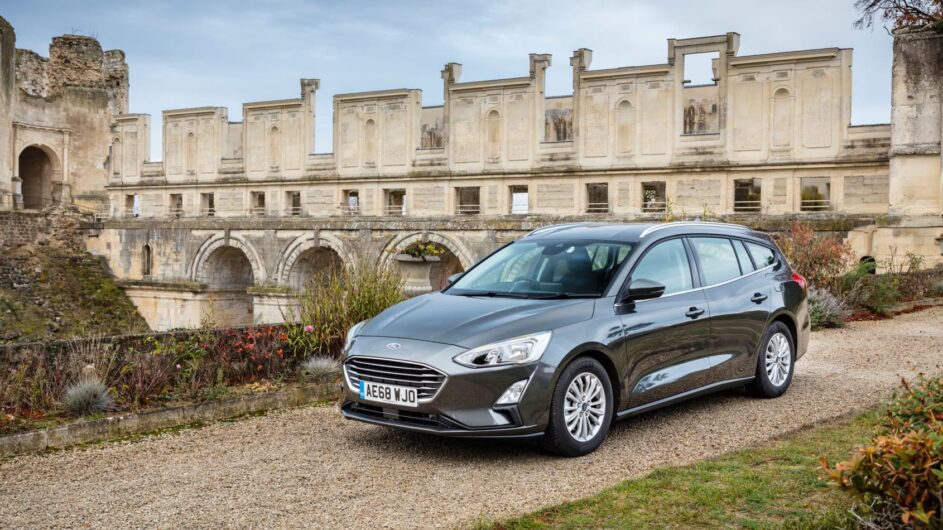
A further $3520 over the Zetec will upgrade you to either ST-Line or Titanium models, both of which offer even more kit, the former adding sportier exterior styling, wheels and interior trim. Titanium models keep the standard styling, but add lots of convenience features like all-round parking sensors, heated seats, climate control and keyless entry, amongst other things. From here, both ST-Line and Titanium models can be upgraded to ST-Line X and Titanium X models, integrating partial leather trim and new alloys. Topping the range is the Vignale model, adding a heap of equipment, including LED headlights, leather interior trim, a head-up display, heated steering wheel and an upgraded B&O sound system. Some of these features are also available as options on lesser models, but only the Vignale can be optioned with proper big-car tech like adaptive LED headlights and double-glazed front windows. The crux is that it’s entirely possible in this day and age to specify a standard Ford Focus beyond $38,000, which is a lot of money to part with without a premium badge on the nose. Model for model, Estate versions cost $1400 more, and are available in all model variations, including the high-riding Active, making it a sort of miniature Audi A6 Allroad. As for its rivals, spec for spec the Ford is more expensive than an equivalent Vauxhall Astra, Hyundai i30 or Kia Ceed by a few hundred pounds, sits just underneath the Honda Civic and Peugeot 308, but is a fair way below the Volkswagen Golf. Using an automatic 148bhp Focus ST-Line model as an example, an equivalent Golf R-Line is a hefty $4470 more expensive.
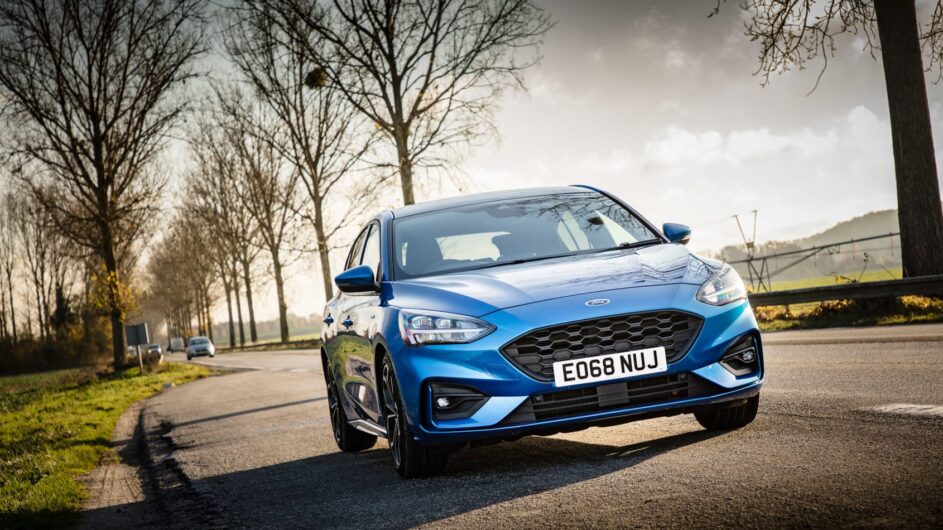
Performance and 0-100kph time
Until the ST arrives next summer, the cooking Focus range is made up of a combination of three-cylinder petrol and four-cylinder diesel engines. The three-pot is available in 1-litre and 1.5-litre forms, the latter shared with the Fiesta ST, albeit in lesser power outputs.
An entry-level 84bhp 1-litre opens the range, taking 13.5sec to reach 100kph. As mentioned above, this engine is also only available in the entry-level model, so it’ll likely take up space in company or rental fleets.
The 99bhp and 124bhp models are slightly more brisk, doing the deed in 12.1sec and 10.0sec respectively, the latter also available with an optional eight-speed auto, adding 1.1sec to the acceleration time.
The friskier 1.5-litre turbocharged units are available in 148bhp and 180bhp forms, taking 8.8sec and 8.3sec to reach 100kph. Only the lower-powered model of the two is available with an auto.
As for the diesels, 94bhp, 119bhp and 148bhp versions are available, with acceleration times ranging between 11.4sec and an impressive 8.5sec (for the manual 148bhp version), only two-tenths behind the 180bhp petrol.
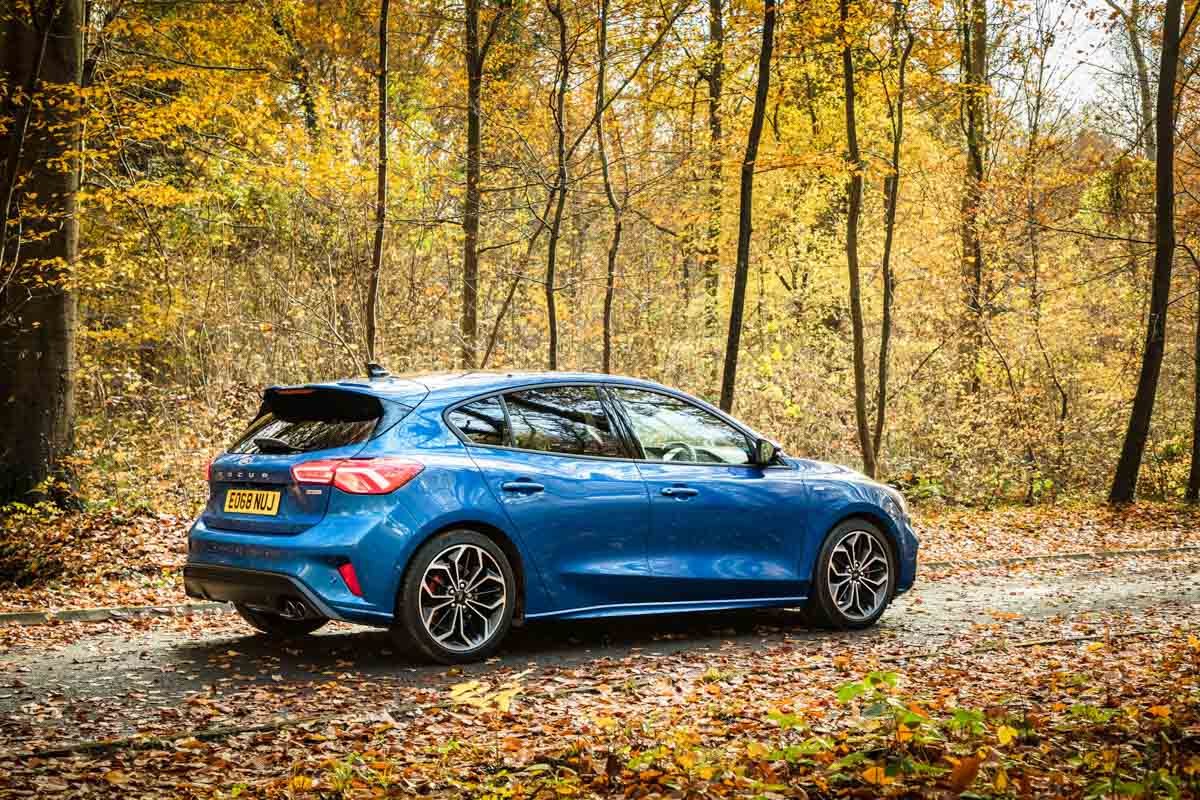
Engine and gearbox
The whole engine range’s general refinement is impressive, displaying little vibration or gruffness in any model. The 1-litre Ecoboost is an engine we’ve been accustomed to for a while now, and it’s just as good in this latest Focus. The linear power delivery and response is typical Ford, and matches the Focus’s larger packaging well, even if it’s not exactly fast.
The 1.5-litre three-cylinder is shared with the new Fiesta ST, and we like that car. Here, the smaller turbos combined with the Focus’s extra mass doesn’t give these engines quite the kick it does in the Fiesta, but they are smooth, torquey, yet still will happily spin right up to the red line with more alacrity than a three-cylinder Golf, although the Golf still pips the Focus for overall refinement. The Golf’s 1.5-litre four-cylinder engine also feels a more robust and sophisticated engine, which is important when you’re charging over $32k for a family hatchback.
All engines are fitted with a slick-shifting six-speed manual gearbox as standard. The throw is short and direct, with little slack, and a tight, controlled movement. An eight-speed automatic is also available depending on the specification, which is a dramatic improvement on the previous Focus’s dual-clutch gearbox, which was slow to react and jerky between shifts. The new eight-speed is far smoother, quickly and decisively shifting through the ratios in automatic mode.
A second benefit of the automatic is the redesigned centre console as Ford has moved to a small, Jaguar-like rotary gear selector, opening up space in the centre console, but some may find it a little counter intuitive to use. Most models are also fitted with paddles behind the steering wheel to change gears manually, but it’s here that the changes can be sluggish and languid when you want to press on.
Diesels, frugal and refined, are up to par, but not class leading. They are quite happy to trundle along at very low rpm, which you’ll generally do anyway thanks to the long gearing. The automatic is a good match, too, and probably the preferable option to the manual if you’re more into a ‘relaxed’ driving style.
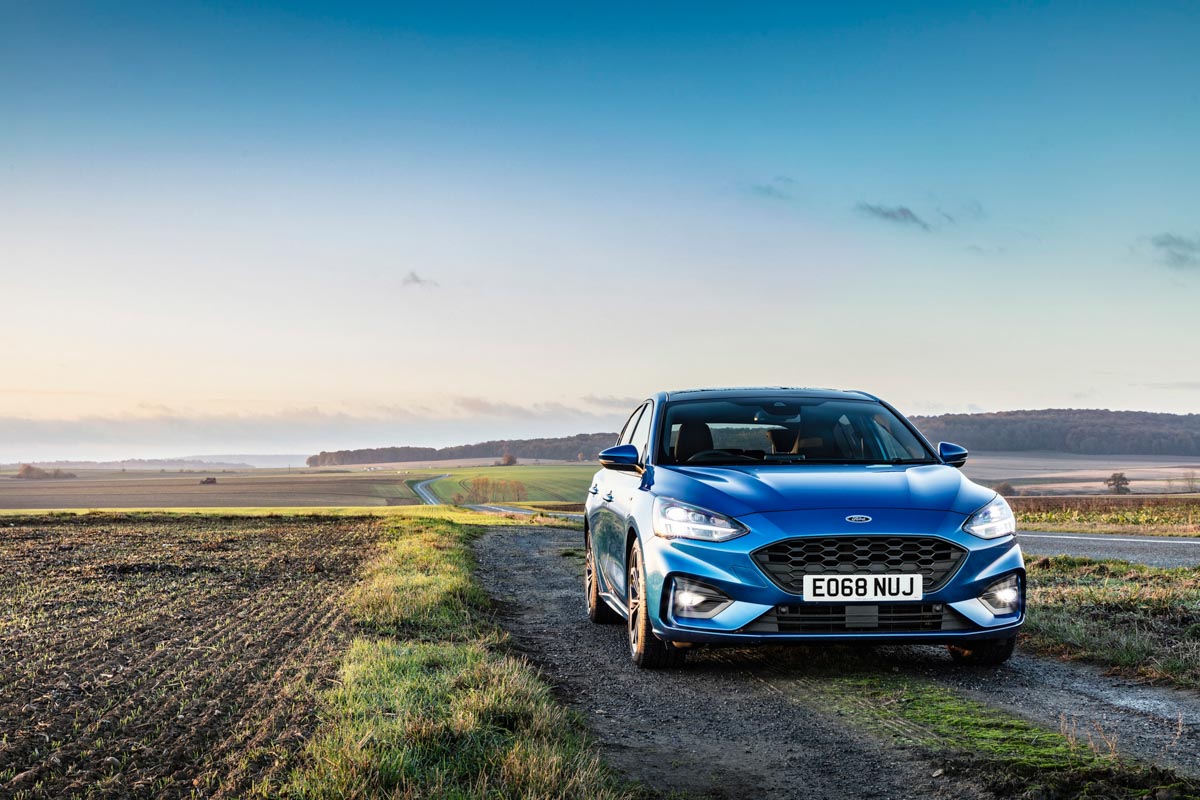
Ride and Handling
You’ll be glad to know that right off the back, the Focus is just as good to drive as ever in this latest model, but there is a caveat or two to consider. Underpinning the all-new Focus is an all-new ‘C2’ chassis, which is lower, wider and stiffer than the one it replaces. Overall rigidity is increased by 20 per cent, while the suspension mounting points are an impressive 50 per cent stiffer.
The suspension layout is similar to before, combining MacPherson struts on the front axle with a multi-link set-up on the rear. Adaptive dampers are also available, but we found the difference between normal and sport modes is subtle to say the least, and probably aren’t worth the extra outlay. On the standard passive dampers, the Focus treads a good balance between overall ride comfort and body control. Neither is particularly pronounced, but seems to find harmony with the Focus’s control weights in the steering and clutch, helping the Focus feel congruous and together. ST-Line models also pick up a firmer set-up, sitting 10mm lower than other models. The ride is still very good, however, and is our preference.
Here lies the first caveat, though, as like no Focus before, the multi-link rear suspension system is not standard across the range, as some entry-level models with lower-powered engines make do with the torsion beam rear suspension set-up borrowed from the smaller Fiesta. Although it’s not an inherently bad set-up, cars on the basic suspension have the same issues as most cars on a torsion beam, namely a bouncier, less sophisticated ride quality and reduction of body control at higher speeds.
Start to lean on the chassis and there is an inherent softness to the suspension, too, but the chassis underneath remains completely in its element, feeling like there is plenty of travel in the suspension, with little you can do to push it out of its comfort zone. This type of limit handling might not be what the average Focus owner will explore, but for the rest of us, it certainly bodes well for the incoming ST.
The steering is also well weighted, natural feeling and articulates the front end just enough to give you a sense of how much grip the front end has to give, and while not quite as sharp as the previous Focus, it is still better than most rivals. The estate version is nigh on identical to the hatch, perhaps feeling a passenger or so heavier when really pushed. The Estate’s compact multi-link set-up is slightly different to the hatch, liberating more boot space, but also has little overall effect on the handling unless you’re really pushing it, in which case the rear axle feels a little more wayward and remote.
L/100km and running costs
Running costs for this type of car are typically slim, with a low purchase price, servicing and parts pricing. L/100km figures on this latest Focus are also particularly impressive, ranging between around 4.7 L/100km for 1-litre petrols and 5.6L/100km for the 1.5-litre. Automatics drop the L/100km by about 56.5L/100km on average.
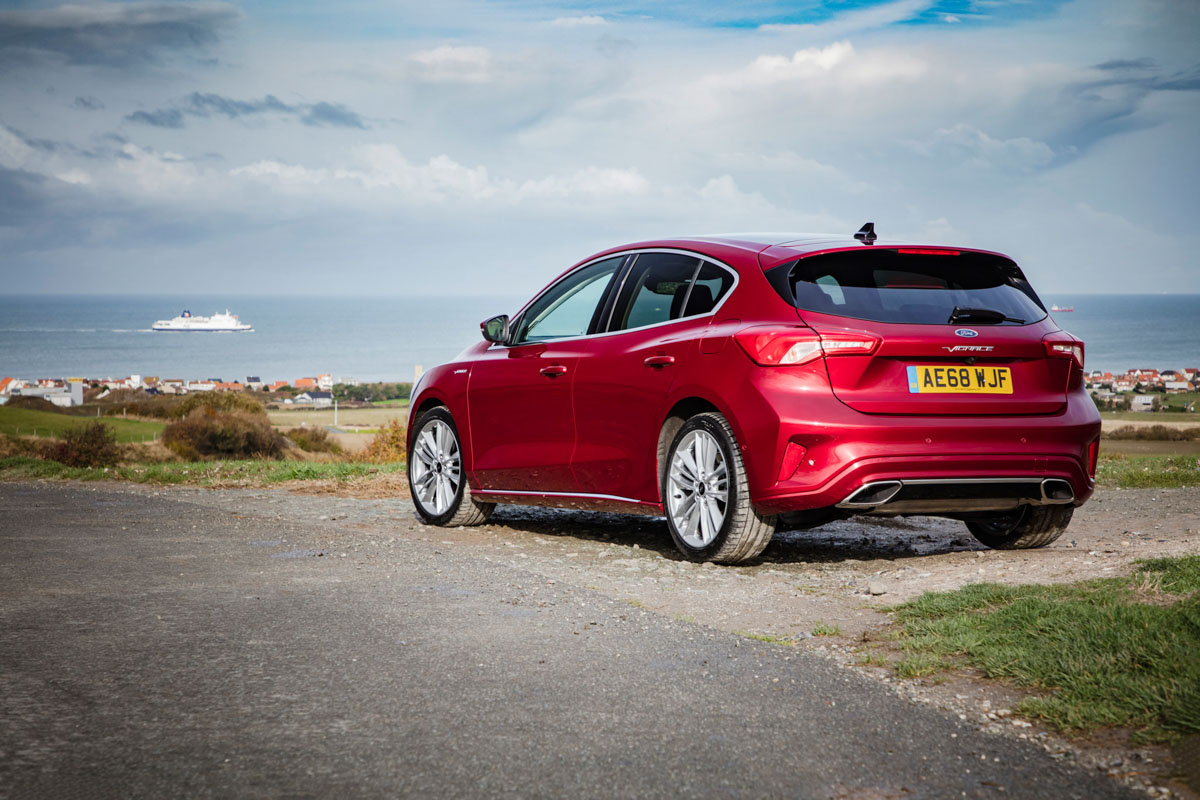
Diesels really flex their muscles, too, claiming a massive 3.5L/100km in the smaller 1.5-litre engine, with the 2-litre dropping to around 4.3L/100km. Oddly, the automatic gearbox option has little to no effect on the diesel’s numbers. You can probably thank the extra two gears and the diesel’s ability to happily cruise at idle-like rpms for that.
Interior and tech
If there was a fundamental wrongdoing in the last Focus, many would say it was the interior. Not only was it poorly made and full of bad plastics, but it was also an ergonomic nightmare. The dashboard itself was vast, making you feel like you were peering over a sea of mismatched plastics and a quite terrible infotainment screen that was a pain to use.
The seats were also too high, the gearstick awkwardly placed and the handbrake, well that was just plain awful, so it’s good to see that like the exterior, the interior has been completely redesigned.
If you’ve sat in a new Fiesta, you’ll be instantly at home in the Focus. The dashboard is now much lower and classically proportioned. In front of the driver is a clear, clean set of dials, with a small colour screen mounted between on higher-specification models. The simple dash layout now logically groups all the controls where you would expect them to be, while the dash top-mounted 8-inch screen is clear, logical and nicer to use than many rivals.
Of more importance to us however is the driving position, which is lower and more adjustable than before. You can get the wheel right to your chest in a way you just couldn’t in the previous model, and with the bulbous dash no longer in your way visibility is improved and there’s a more open sense of interior space.
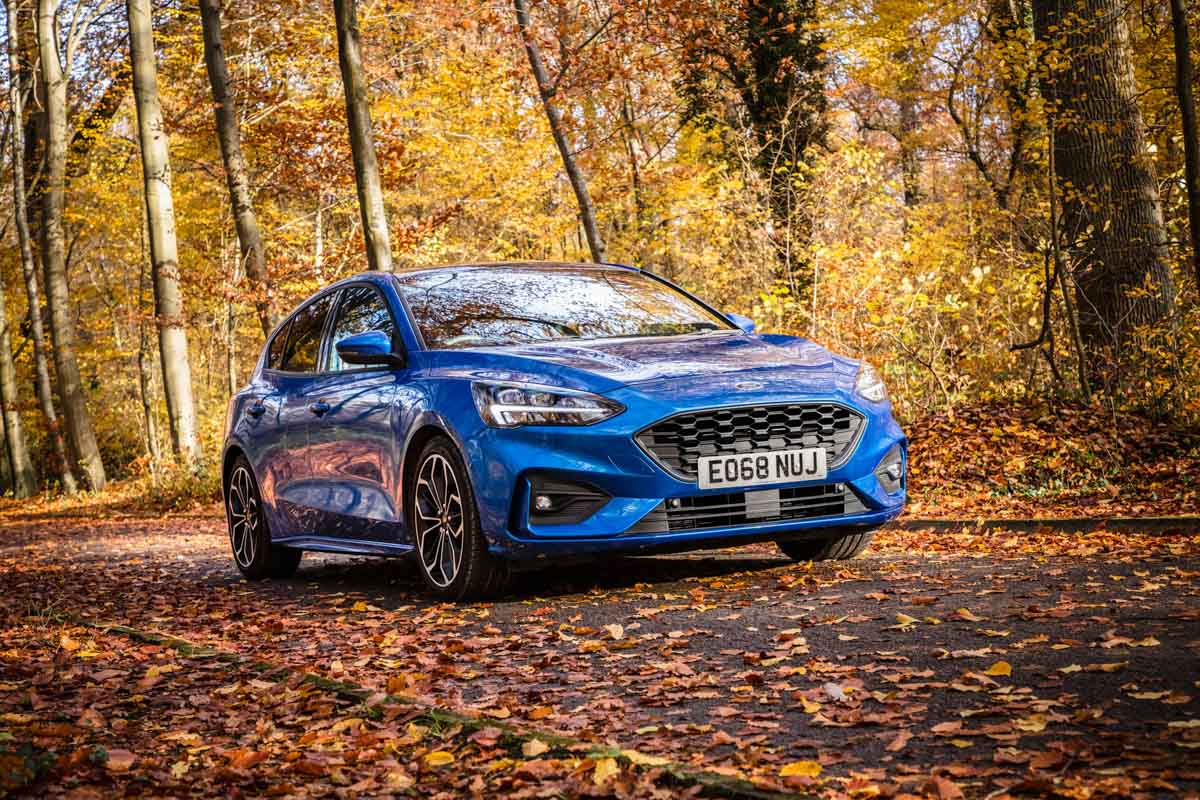
Design
Despite all the changes under the skin, the first thing most will notice is the massive change to the new Focus’s look. Along with the new chassis, Ford has dramatically changed the shape, losing the previous car’s mono-box design and instead following most of the hatchback crowd by going with a more Golf-like two-box shape, pulling the windscreen back and pushing the C-pillars into a more upright position.
The nose is now much more pronounced, with a large grille flanked by various designs of halogen or optional LED headlights, the latter available in standard, or active form. You can make up your own mind about whether you think the design is successful, but it is quite angle-sensitive, looking broad-shouldered and squat from some angles, and gawky and unrefined from others.
ST-Line cars also give us a glimpse into the next-generation Focus ST, as like the Fiesta it will share front and rear styling with the ST-Line, although a new exhaust system and bigger wheels will still make the full-fat ST distinct from lesser models.
This article originally appeared at evo.co.uk
Copyright © evo UK, Dennis Publishing

